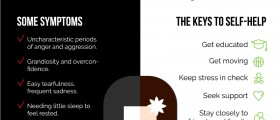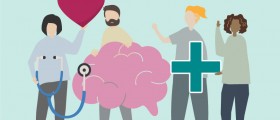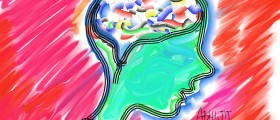
Bipolar disorder is a type of the mental illness characterized by the constant change of manic and depressive states. However, depression is the symptom which is more common. The condition, which seems to be genetically transferable, is probably the direct consequence of malregulation of the amines - norepinephrine, dopamine, and 5-hydroxytryptamine. The most common means of treatment include the employment of lithium carbonate. The direct followers, i.e. consequences of this condition are mood swings lasting for a particular period of time (optimistic, euphoric, sad, happy, angry, easily irritated etc.), changes in the way of thinking, unfounded self-confidence, problems with maintaining concentration, self delusions, hallucinations, sudden changes in behavior and physical condition, to name the most commonly present ones.
If analyzing the frequency of appearance, in nine out of ten suffering from this disorder, depression is a quite common side effect as well. Also often present are: loss of interest in doing just about anything, feeling utterly hopeless and disappointed, absence of appetite and sleep disorders. If some or majority of these criteria can be applied to the person’s condition, then this person is diagnosed with bipolar disorder. Given the fact that there exist different varieties of bipolar disorder, they are classified in the following manner, which is based on the description of the present mood-related episode or the one which occurred most recently. The latter one can also be classified according to the following criteria – presence of psychotic features, presence of catatonic features, postpartum onset and absence of psychotic features. In order for the proper diagnosing to be possible there needs to exist a general rule which, in this case, is that a person experiences minimum 4 mood swings in the course of one year.
Inability to control emotions and behavior accordingly, becoming easily irritated and unfriendly, presence of deep euphoria, paranoia, tendency to assault those in your environment (both physically or verbally), speaking too loud and in an extremely fast manner, disregard for others and interfering when that other person is talking, tendency to be rather too theatric, inability to stick to one position and sleep disorders.
One of the ways of treating this condition is by means of mood stabilizing drugs and medicines. Aside from this method, electroconvulsive therapy is also a frequently employed treatment technique, but especially intended for those who are extremely ill. Among other commonly used methods are transcranial magnetic stimulation, psychotherapy and ultimately hospitalization.

















Your thoughts on this
Loading...